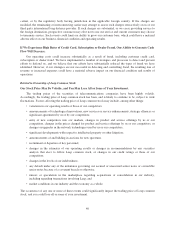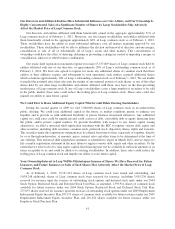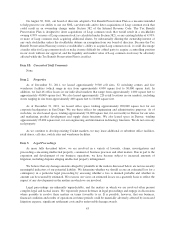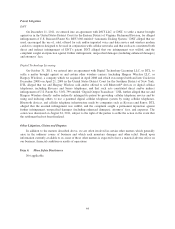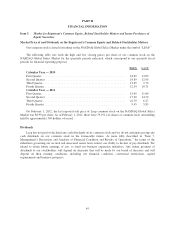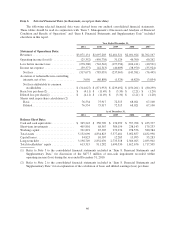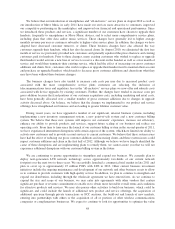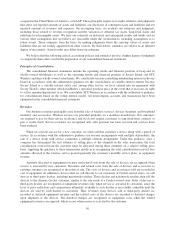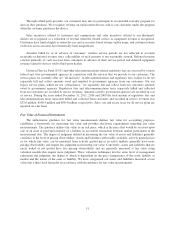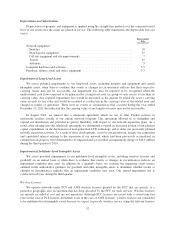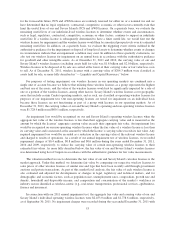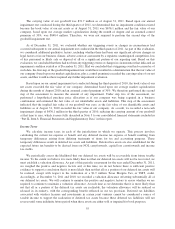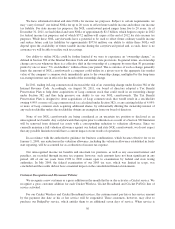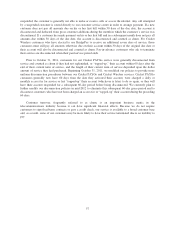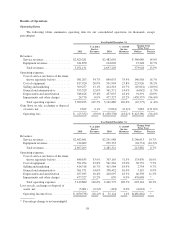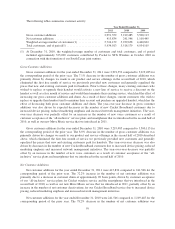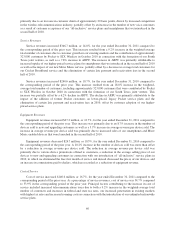Cricket Wireless 2011 Annual Report Download - page 60
Download and view the complete annual report
Please find page 60 of the 2011 Cricket Wireless annual report below. You can navigate through the pages in the report by either clicking on the pages listed below, or by using the keyword search tool below to find specific information within the annual report.accepted in the United States of America, or GAAP. These principles require us to make estimates and judgments
that affect our reported amounts of assets and liabilities, our disclosure of contingent assets and liabilities and our
reported amounts of revenues and expenses. On an ongoing basis, we evaluate our estimates and judgments,
including those related to revenue recognition and the valuation of deferred tax assets, long-lived assets and
indefinite-lived intangible assets. We base our estimates on historical and anticipated results and trends and on
various other assumptions that we believe are reasonable under the circumstances, including assumptions as to
future events. These estimates form the basis for making judgments about the carrying values of assets and
liabilities that are not readily apparent from other sources. By their nature, estimates are subject to an inherent
degree of uncertainty. Actual results may differ from our estimates.
We believe that the following critical accounting policies and estimates involve a higher degree of judgment
or complexity than others used in the preparation of our consolidated financial statements.
Principles of Consolidation
The consolidated financial statements include the operating results and financial position of Leap and its
wholly-owned subsidiaries as well as the operating results and financial position of Savary Island and STX
Wireless and their wholly-owned subsidiaries. We consolidate our non-controlling membership interest in Savary
Island in accordance with the authoritative guidance for the consolidation of variable interest entities because
Savary Island is a variable interest entity and, among other factors, we have entered into an agreement with
Savary Island’s other member which establishes a specified purchase price in the event that it exercises its right
to sell its membership interest to us. We consolidate STX Wireless in accordance with the authoritative guidance
for consolidations based on the voting interest model. All intercompany accounts and transactions have been
eliminated in the consolidated financial statements.
Revenues
Our business revenues principally arise from the sale of wireless services, devices (handsets and broadband
modems) and accessories. Wireless services are provided primarily on a month-to-month basis. Our customers
are required to pay for their service in advance and we do not require customers to sign fixed-term contracts or
pass a credit check. Service revenues are recognized only after payment has been received and services have
been rendered.
When we activate service for a new customer, we often sell that customer a device along with a period of
service. In accordance with the authoritative guidance for revenue arrangements with multiple deliverables, the
sale of a device along with service constitutes a multiple element arrangement. Under this guidance, once a
company has determined the best estimate of selling price of the elements in the sales transaction, the total
consideration received from the customer must be allocated among those elements on a relative selling price
basis. Applying the guidance to these transactions results in us recognizing the total consideration received, less
amounts allocated to the wireless service period (generally the customer’s monthly service plan), as equipment
revenue.
Amounts allocated to equipment revenues and related costs from the sale of devices are recognized when
service is activated by new customers. Revenues and related costs from the sale of devices and accessories to
existing customers are recognized at the point of sale. The costs of devices and accessories sold are recorded in
cost of equipment. In addition to devices that we sell directly to our customers at Cricket-owned stores, we sell
devices to third-party dealers, including nationwide retailers. These dealers and nationwide retailers then sell the
devices to the ultimate Cricket customer, similar to the sale made at a Cricket-owned store. Sales of devices to
third-party dealers are recognized as equipment revenues only when service is activated by customers, since the
level of price reductions and commissions ultimately available to such dealers is not reliably estimable until the
devices are sold by such dealers to customers. Thus, revenues from devices sold to third-party dealers are
recorded as deferred equipment revenue and the related costs of the devices are recorded as deferred charges
upon shipment of the devices. The deferred charges are recognized as equipment costs when the related
equipment revenue is recognized, which occurs when service is activated by the customer.
50


